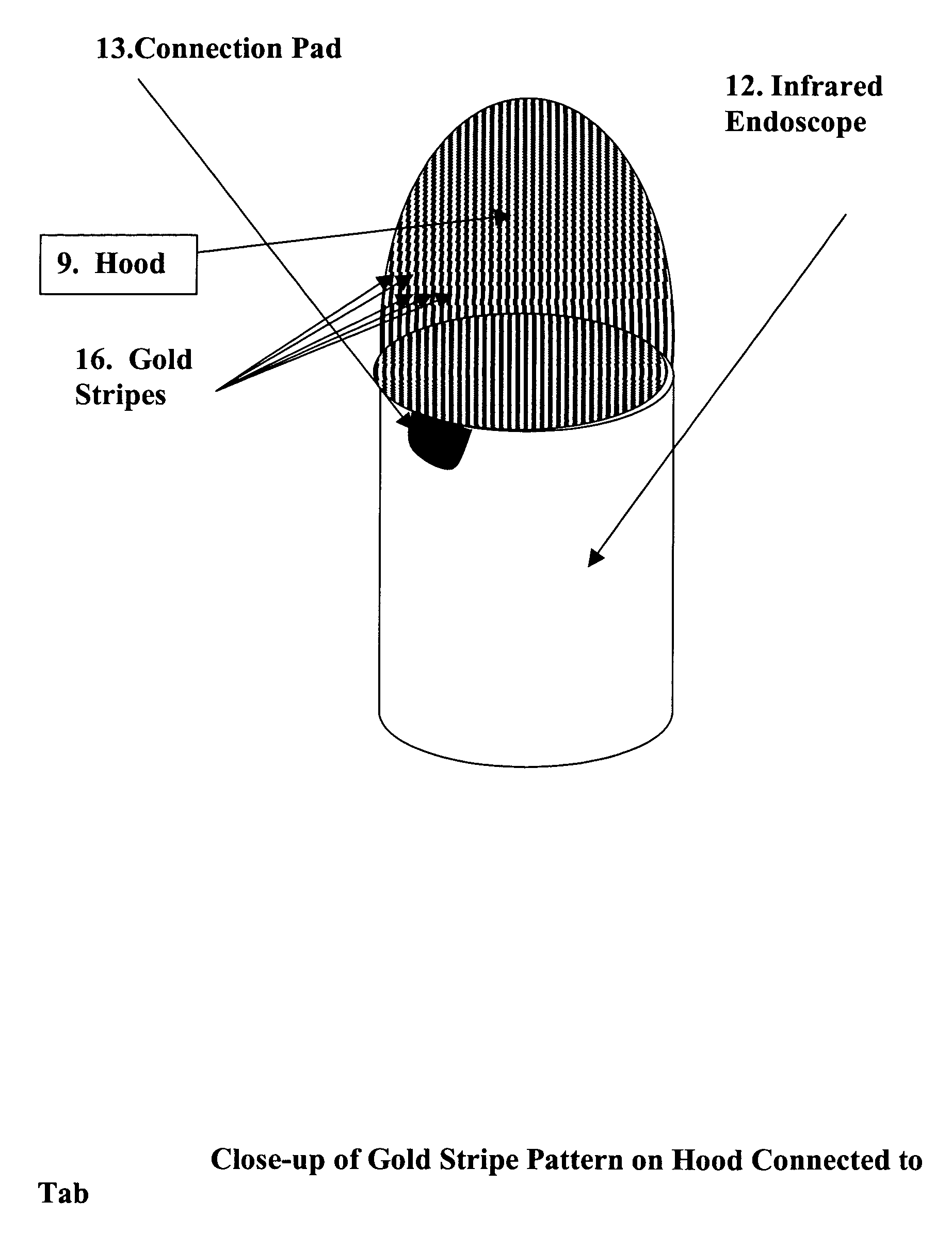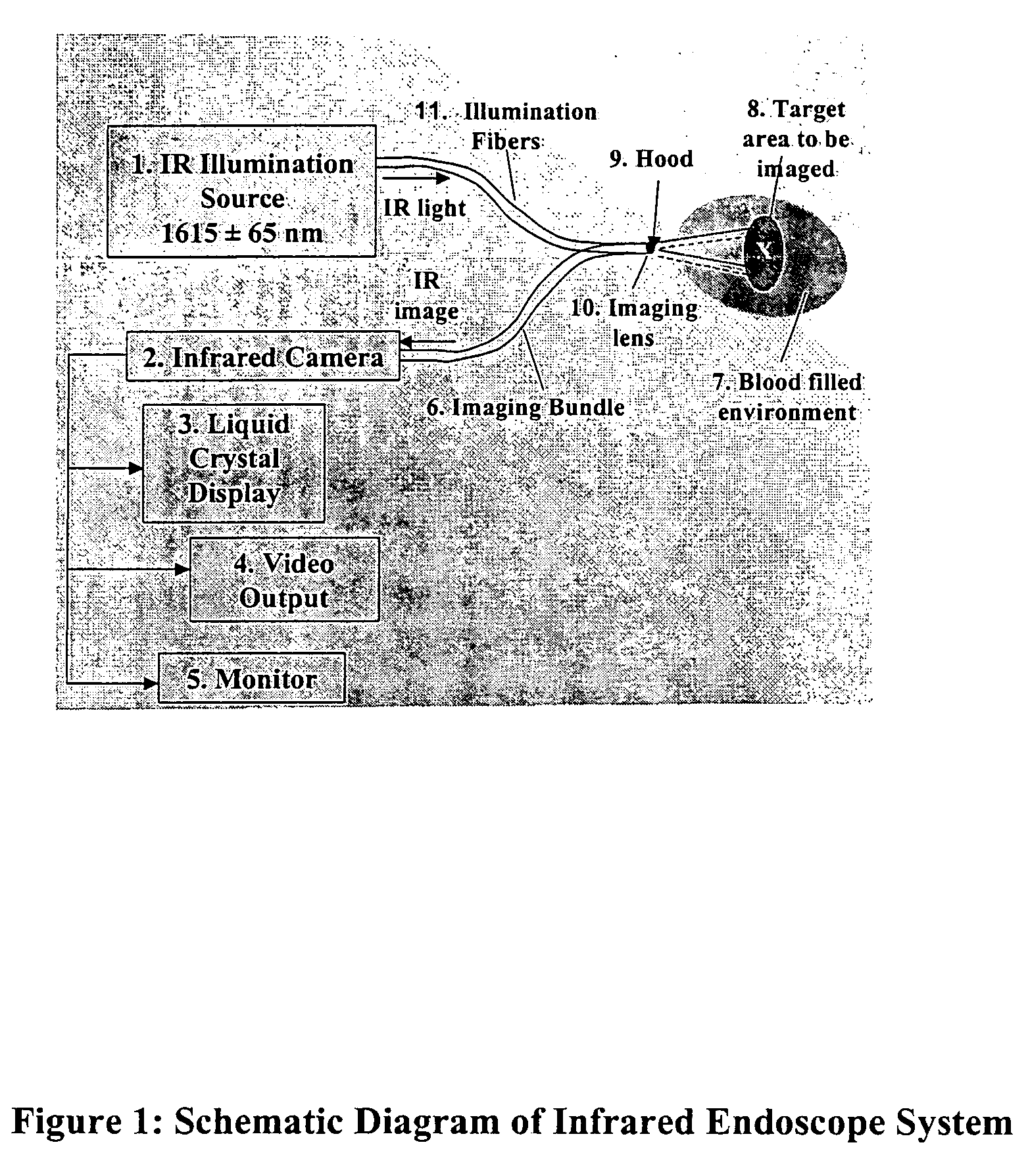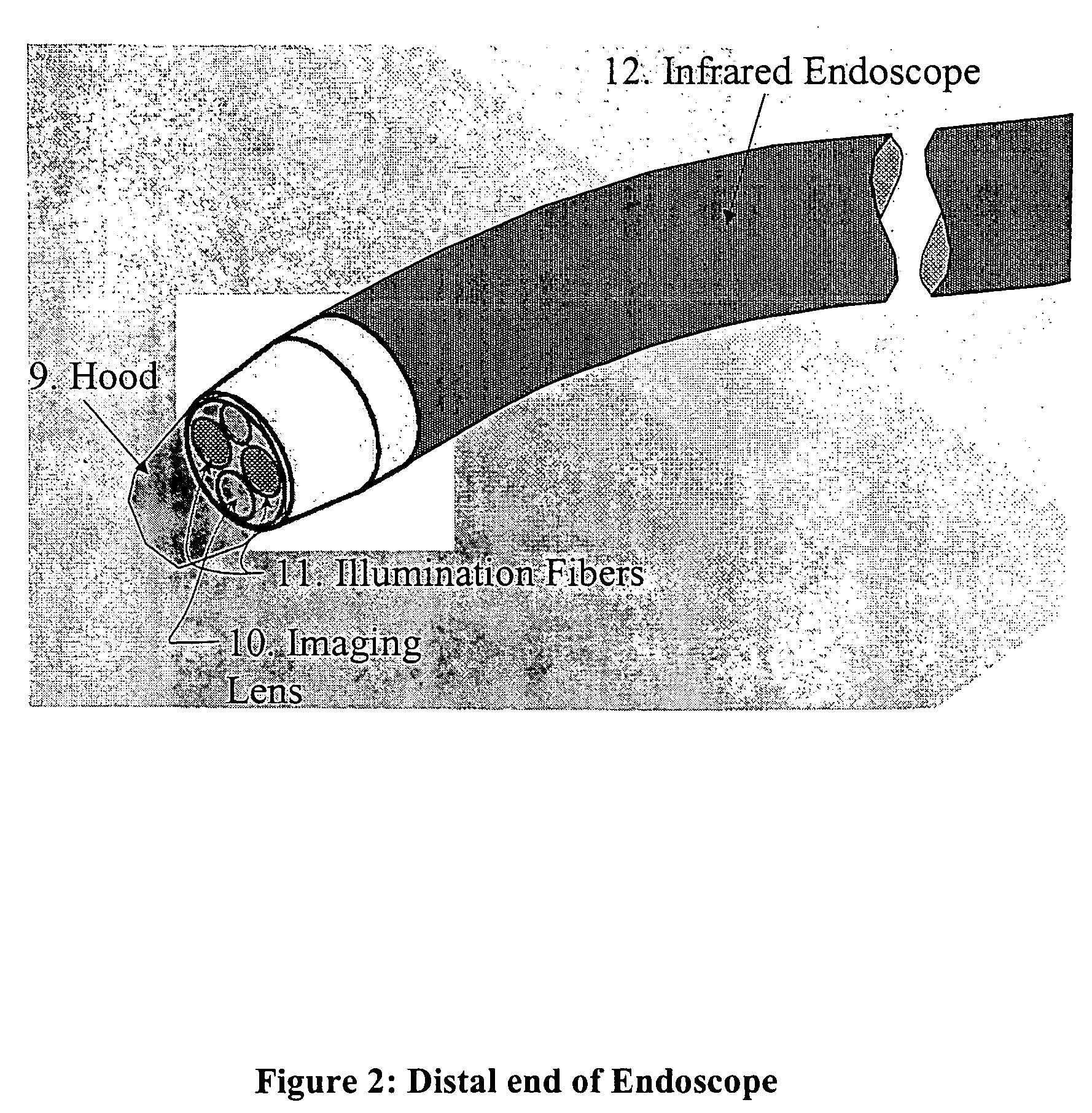Transparent electrode for the radiofrequency ablation of tissue
a transparent electrode and radiofrequency ablation technology, applied in the field of human tissue radiofrequency ablation, can solve the problem that the ablative tissue region was sometimes unrecognizable, and achieve the effect of accurate and responsive temperature measurement and more cost-effectiveness
- Summary
- Abstract
- Description
- Claims
- Application Information
AI Technical Summary
Benefits of technology
Problems solved by technology
Method used
Image
Examples
embodiment 1
[0077]In FIG. 3, gold is deposited uniformly over the hood at about a 20-80 nm thickness. The gold coating is extended and attached to a gold connecting pad (13). The gold connecting pad is also electrically connected to a nitinol wire (15), which extends out of the proximal end of the catheter and is plugged into an RF generator for catheter ablation procedures. This configuration allows the physician to view the ablative process in real-time through a transparent ablation electrode.
[0078]In addition, the use of minute metallic quantities coupled with a gold, titanium or nitinol connecting wire—all non-magnetic materials—make this catheter magnetic resonance (MR) imaging compatible. Since MR machines utilize powerful magnets, conventional ablation catheters constructed from steel wires and platinum hemispheres are not only moved by the large magnets but can heat tissue from induction by the magnetic fields. With the metal-deposition process, even if a magnetic material is used, the...
embodiment 2
[0079]An alternative to constructing a transparent electrode by coating it with a very thin layer of gold, is to form a pattern on the hood which includes enough space between the gold-deposited pattern so it appears nearly transparent on the viewing monitor. FIG. 4 shows such an embodiment. In this embodiment, a series of gold-plated stripes (16) are fabricated on the surface of the hood. Each of these stripes is connected to a gold connecting pad (13). As shown in FIG. 5, the connecting pad is connected to a nitinol, titanium or gold wire (15) for connection to an RF generator. The gold stripe does need not to be transparent since adequate imaging is provided by the spaces between the stripes. The pattern can be a cross-hatched as well as striped. The spacing between metallic lines should be no greater than one millimeter since RF energy ablates tissue about one millimeter from the electrode surface. Sub-millimeter spacings will insure a continuous lesion in the spaces between ele...
embodiment 3
[0081]A typical application of the invention is with a transvenous catheter, however the invention is not limited to that application. The next embodiment (FIG. 6) depicts a rigid conventional visible-region endoscope (18) ablating a liver tumor (19). As in the infrared endoscope, a glass hood (9) is placed over the proximal end of the endoscope. The hood is coated with a gold coating of about 60 nanometers or less. A nitinol wire connects the gold coating to an RF generator (17). The endoscope provides visual confirmation of the tumor ablation. The demarcation of the tumor boundary to normal tissue is observable in the endoscope image viewed on the monitor. This permits greater precision in eradicating the tumor with safe margins into healthy tissue to assure non-reoccurrence of the tumor.
PUM
| Property | Measurement | Unit |
|---|---|---|
| length | aaaaa | aaaaa |
| diameter | aaaaa | aaaaa |
| thickness | aaaaa | aaaaa |
Abstract
Description
Claims
Application Information
 Login to View More
Login to View More - R&D
- Intellectual Property
- Life Sciences
- Materials
- Tech Scout
- Unparalleled Data Quality
- Higher Quality Content
- 60% Fewer Hallucinations
Browse by: Latest US Patents, China's latest patents, Technical Efficacy Thesaurus, Application Domain, Technology Topic, Popular Technical Reports.
© 2025 PatSnap. All rights reserved.Legal|Privacy policy|Modern Slavery Act Transparency Statement|Sitemap|About US| Contact US: help@patsnap.com



